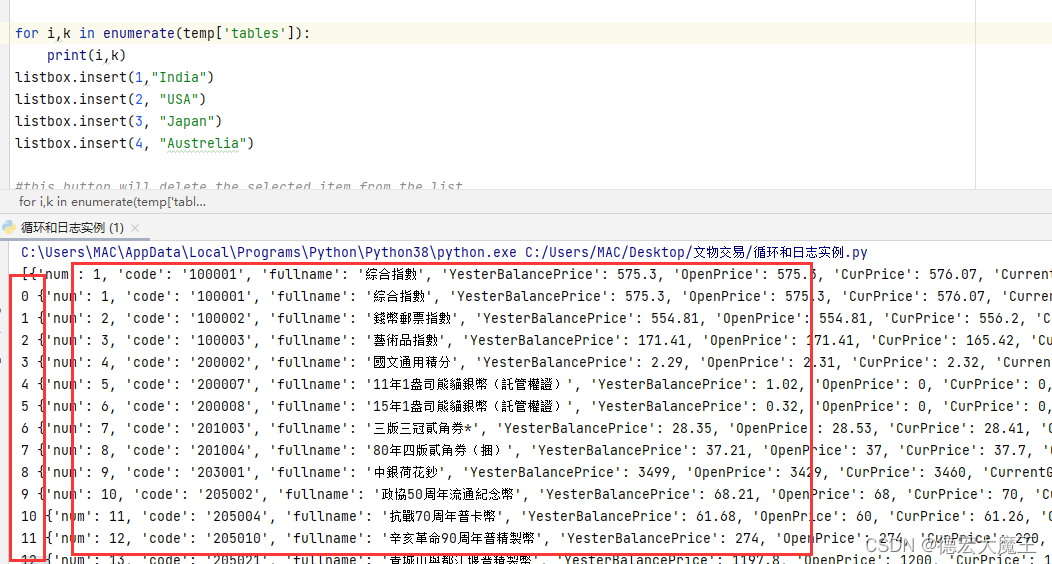用Openmp实现AES在C语言中的并行仿真
这是我的问题。我想使用Openmp在C中并行AES-128加密。下面的代码使用openmp,我几乎没有得到任何加速。我的机器是四核英特尔i5机。
这是密码。任何关于如何进一步并行化这段代码的建议都是非常感谢的。请看一下代码末尾的主要功能。下面的AES代码由几个函数组成,以实现其功能。请建议如何最好地从中提取并行性。
非常感谢。
/*
******************************************************************
** Advanced Encryption Standard implementation in C. **
** By Niyaz PK **
** E-mail: niyazpk@gmail.com **
** Downloaded from Website: www.hoozi.com **
******************************************************************
This is the source code for encryption using the latest AES algorithm.
******************************************************************
*/
// Include stdio.h for standard input/output.
// Used for giving output to the screen.
#include<omp.h>
#include<stdio.h>
#include<time.h>
#include<stdlib.h>
// The number of columns comprising a state in AES. This is a constant in AES. Value=4
#define Nb 4
// The number of rounds in AES Cipher. It is simply initiated to zero. The actual value is recieved in the program.
int Nr=0;
// The number of 32 bit words in the key. It is simply initiated to zero. The actual value is recieved in the program.
int Nk=0;
// in - it is the array that holds the plain text to be encrypted.
// out - it is the array that holds the output CipherText after encryption.
// state - the array that holds the intermediate results during encryption.
unsigned char in[16], out[16], state[4][4];
// The array that stores the round keys.
unsigned char RoundKey[240];
// The Key input to the AES Program
unsigned char Key[32];
int getSBoxValue(int num)
{
int sbox[256] = {
//0 1 2 3 4 5 6 7 8 9 A B C D E F
0x63, 0x7c, 0x77, 0x7b, 0xf2, 0x6b, 0x6f, 0xc5, 0x30, 0x01, 0x67, 0x2b, 0xfe, 0xd7, 0xab, 0x76, //0
0xca, 0x82, 0xc9, 0x7d, 0xfa, 0x59, 0x47, 0xf0, 0xad, 0xd4, 0xa2, 0xaf, 0x9c, 0xa4, 0x72, 0xc0, //1
0xb7, 0xfd, 0x93, 0x26, 0x36, 0x3f, 0xf7, 0xcc, 0x34, 0xa5, 0xe5, 0xf1, 0x71, 0xd8, 0x31, 0x15, //2
0x04, 0xc7, 0x23, 0xc3, 0x18, 0x96, 0x05, 0x9a, 0x07, 0x12, 0x80, 0xe2, 0xeb, 0x27, 0xb2, 0x75, //3
0x09, 0x83, 0x2c, 0x1a, 0x1b, 0x6e, 0x5a, 0xa0, 0x52, 0x3b, 0xd6, 0xb3, 0x29, 0xe3, 0x2f, 0x84, //4
0x53, 0xd1, 0x00, 0xed, 0x20, 0xfc, 0xb1, 0x5b, 0x6a, 0xcb, 0xbe, 0x39, 0x4a, 0x4c, 0x58, 0xcf, //5
0xd0, 0xef, 0xaa, 0xfb, 0x43, 0x4d, 0x33, 0x85, 0x45, 0xf9, 0x02, 0x7f, 0x50, 0x3c, 0x9f, 0xa8, //6
0x51, 0xa3, 0x40, 0x8f, 0x92, 0x9d, 0x38, 0xf5, 0xbc, 0xb6, 0xda, 0x21, 0x10, 0xff, 0xf3, 0xd2, //7
0xcd, 0x0c, 0x13, 0xec, 0x5f, 0x97, 0x44, 0x17, 0xc4, 0xa7, 0x7e, 0x3d, 0x64, 0x5d, 0x19, 0x73, //8
0x60, 0x81, 0x4f, 0xdc, 0x22, 0x2a, 0x90, 0x88, 0x46, 0xee, 0xb8, 0x14, 0xde, 0x5e, 0x0b, 0xdb, //9
0xe0, 0x32, 0x3a, 0x0a, 0x49, 0x06, 0x24, 0x5c, 0xc2, 0xd3, 0xac, 0x62, 0x91, 0x95, 0xe4, 0x79, //A
0xe7, 0xc8, 0x37, 0x6d, 0x8d, 0xd5, 0x4e, 0xa9, 0x6c, 0x56, 0xf4, 0xea, 0x65, 0x7a, 0xae, 0x08, //B
0xba, 0x78, 0x25, 0x2e, 0x1c, 0xa6, 0xb4, 0xc6, 0xe8, 0xdd, 0x74, 0x1f, 0x4b, 0xbd, 0x8b, 0x8a, //C
0x70, 0x3e, 0xb5, 0x66, 0x48, 0x03, 0xf6, 0x0e, 0x61, 0x35, 0x57, 0xb9, 0x86, 0xc1, 0x1d, 0x9e, //D
0xe1, 0xf8, 0x98, 0x11, 0x69, 0xd9, 0x8e, 0x94, 0x9b, 0x1e, 0x87, 0xe9, 0xce, 0x55, 0x28, 0xdf, //E
0x8c, 0xa1, 0x89, 0x0d, 0xbf, 0xe6, 0x42, 0x68, 0x41, 0x99, 0x2d, 0x0f, 0xb0, 0x54, 0xbb, 0x16 }; //F
return sbox[num];
}
// The round constant word array, Rcon[i], contains the values given by
// x to th e power (i-1) being powers of x (x is denoted as {02}) in the field GF(28)
// Note that i starts at 1, not 0).
int Rcon[255] = {
0x8d, 0x01, 0x02, 0x04, 0x08, 0x10, 0x20, 0x40, 0x80, 0x1b, 0x36, 0x6c, 0xd8, 0xab, 0x4d, 0x9a,
0x2f, 0x5e, 0xbc, 0x63, 0xc6, 0x97, 0x35, 0x6a, 0xd4, 0xb3, 0x7d, 0xfa, 0xef, 0xc5, 0x91, 0x39,
0x72, 0xe4, 0xd3, 0xbd, 0x61, 0xc2, 0x9f, 0x25, 0x4a, 0x94, 0x33, 0x66, 0xcc, 0x83, 0x1d, 0x3a,
0x74, 0xe8, 0xcb, 0x8d, 0x01, 0x02, 0x04, 0x08, 0x10, 0x20, 0x40, 0x80, 0x1b, 0x36, 0x6c, 0xd8,
0xab, 0x4d, 0x9a, 0x2f, 0x5e, 0xbc, 0x63, 0xc6, 0x97, 0x35, 0x6a, 0xd4, 0xb3, 0x7d, 0xfa, 0xef,
0xc5, 0x91, 0x39, 0x72, 0xe4, 0xd3, 0xbd, 0x61, 0xc2, 0x9f, 0x25, 0x4a, 0x94, 0x33, 0x66, 0xcc,
0x83, 0x1d, 0x3a, 0x74, 0xe8, 0xcb, 0x8d, 0x01, 0x02, 0x04, 0x08, 0x10, 0x20, 0x40, 0x80, 0x1b,
0x36, 0x6c, 0xd8, 0xab, 0x4d, 0x9a, 0x2f, 0x5e, 0xbc, 0x63, 0xc6, 0x97, 0x35, 0x6a, 0xd4, 0xb3,
0x7d, 0xfa, 0xef, 0xc5, 0x91, 0x39, 0x72, 0xe4, 0xd3, 0xbd, 0x61, 0xc2, 0x9f, 0x25, 0x4a, 0x94,
0x33, 0x66, 0xcc, 0x83, 0x1d, 0x3a, 0x74, 0xe8, 0xcb, 0x8d, 0x01, 0x02, 0x04, 0x08, 0x10, 0x20,
0x40, 0x80, 0x1b, 0x36, 0x6c, 0xd8, 0xab, 0x4d, 0x9a, 0x2f, 0x5e, 0xbc, 0x63, 0xc6, 0x97, 0x35,
0x6a, 0xd4, 0xb3, 0x7d, 0xfa, 0xef, 0xc5, 0x91, 0x39, 0x72, 0xe4, 0xd3, 0xbd, 0x61, 0xc2, 0x9f,
0x25, 0x4a, 0x94, 0x33, 0x66, 0xcc, 0x83, 0x1d, 0x3a, 0x74, 0xe8, 0xcb, 0x8d, 0x01, 0x02, 0x04,
0x08, 0x10, 0x20, 0x40, 0x80, 0x1b, 0x36, 0x6c, 0xd8, 0xab, 0x4d, 0x9a, 0x2f, 0x5e, 0xbc, 0x63,
0xc6, 0x97, 0x35, 0x6a, 0xd4, 0xb3, 0x7d, 0xfa, 0xef, 0xc5, 0x91, 0x39, 0x72, 0xe4, 0xd3, 0xbd,
0x61, 0xc2, 0x9f, 0x25, 0x4a, 0x94, 0x33, 0x66, 0xcc, 0x83, 0x1d, 0x3a, 0x74, 0xe8, 0xcb };
// This function produces Nb(Nr+1) round keys. The round keys are used in each round to encrypt the states.
void KeyExpansion()
{
int i,j;
unsigned char temp[4],k;
// The first round key is the key itself.
for(i=0;i<Nk;i++)
{
RoundKey[i*4]=Key[i*4];
RoundKey[i*4+1]=Key[i*4+1];
RoundKey[i*4+2]=Key[i*4+2];
RoundKey[i*4+3]=Key[i*4+3];
}
// All other round keys are found from the previous round keys.
while (i < (Nb * (Nr+1)))
{
for(j=0;j<4;j++)
{
temp[j]=RoundKey[(i-1) * 4 + j];
}
if (i % Nk == 0)
{
// This function rotates the 4 bytes in a word to the left once.
// [a0,a1,a2,a3] becomes [a1,a2,a3,a0]
// Function RotWord()
{
k = temp[0];
temp[0] = temp[1];
temp[1] = temp[2];
temp[2] = temp[3];
temp[3] = k;
}
// SubWord() is a function that takes a four-byte input word and
// applies the S-box to each of the four bytes to produce an output word.
// Function Subword()
{
temp[0]=getSBoxValue(temp[0]);
temp[1]=getSBoxValue(temp[1]);
temp[2]=getSBoxValue(temp[2]);
temp[3]=getSBoxValue(temp[3]);
}
temp[0] = temp[0] ^ Rcon[i/Nk];
}
else if (Nk > 6 && i % Nk == 4)
{
// Function Subword()
{
temp[0]=getSBoxValue(temp[0]);
temp[1]=getSBoxValue(temp[1]);
temp[2]=getSBoxValue(temp[2]);
temp[3]=getSBoxValue(temp[3]);
}
}
RoundKey[i*4+0] = RoundKey[(i-Nk)*4+0] ^ temp[0];
RoundKey[i*4+1] = RoundKey[(i-Nk)*4+1] ^ temp[1];
RoundKey[i*4+2] = RoundKey[(i-Nk)*4+2] ^ temp[2];
RoundKey[i*4+3] = RoundKey[(i-Nk)*4+3] ^ temp[3];
i++;
}
}
// This function adds the round key to state.
// The round key is added to the state by an XOR function.
void AddRoundKey(int round)
{
int i,j;
for(i=0;i<4;i++)
{
for(j=0;j<4;j++)
{
state[j][i] ^= RoundKey[round * Nb * 4 + i * Nb + j];
}
}
}
// The SubBytes Function Substitutes the values in the
// state matrix with values in an S-box.
void SubBytes()
{
int i,j;
for(i=0;i<4;i++)
{
for(j=0;j<4;j++)
{
state[i][j] = getSBoxValue(state[i][j]);
}
}
}
// The ShiftRows() function shifts the rows in the state to the left.
// Each row is shifted with different offset.
// Offset = Row number. So the first row is not shifted.
void ShiftRows()
{
unsigned char temp;
// Rotate first row 1 columns to left
temp=state[1][0];
state[1][0]=state[1][1];
state[1][1]=state[1][2];
state[1][2]=state[1][3];
state[1][3]=temp;
// Rotate second row 2 columns to left
temp=state[2][0];
state[2][0]=state[2][2];
state[2][2]=temp;
temp=state[2][1];
state[2][1]=state[2][3];
state[2][3]=temp;
// Rotate third row 3 columns to left
temp=state[3][0];
state[3][0]=state[3][3];
state[3][3]=state[3][2];
state[3][2]=state[3][1];
state[3][1]=temp;
}
// xtime is a macro that finds the product of {02} and the argument to xtime modulo {1b}
#define xtime(x) ((x<<1) ^ (((x>>7) & 1) * 0x1b))
// MixColumns function mixes the columns of the state matrix
// The method used may look complicated, but it is easy if you know the underlying theory.
// Refer the documents specified above.
void MixColumns()
{
int i;
unsigned char Tmp,Tm,t;
for(i=0;i<4;i++)
{
t=state[0][i];
Tmp = state[0][i] ^ state[1][i] ^ state[2][i] ^ state[3][i] ;
Tm = state[0][i] ^ state[1][i] ; Tm = xtime(Tm); state[0][i] ^= Tm ^ Tmp ;
Tm = state[1][i] ^ state[2][i] ; Tm = xtime(Tm); state[1][i] ^= Tm ^ Tmp ;
Tm = state[2][i] ^ state[3][i] ; Tm = xtime(Tm); state[2][i] ^= Tm ^ Tmp ;
Tm = state[3][i] ^ t ; Tm = xtime(Tm); state[3][i] ^= Tm ^ Tmp ;
}
}
// Cipher is the main function that encrypts the PlainText.
void Cipher()
{
int i,j,round=0;
//Copy the input PlainText to state array.
for(i=0;i<4;i++)
{
for(j=0;j<4;j++)
{
state[j][i] = in[i*4 + j];
}
}
// Add the First round key to the state before starting the rounds.
AddRoundKey(0);
// There will be Nr rounds.
// The first Nr-1 rounds are identical.
// These Nr-1 rounds are executed in the loop below.
for(round=1;round<Nr;round++)
{
SubBytes();
ShiftRows();
MixColumns();
AddRoundKey(round);
}
// The last round is given below.
// The MixColumns function is not here in the last round.
SubBytes();
ShiftRows();
AddRoundKey(Nr);
// The encryption process is over.
// Copy the state array to output array.
for(i=0;i<4;i++)
{
for(j=0;j<4;j++)
{
out[i*4+j]=state[j][i];
}
}
}
void encrypt(int *K,int *PT,int *CT)
{
int i;
// int ct;
// Calculate Nk and Nr from the received value.
Nr = 128;
Nk = Nr / 32;
Nr = Nk + 6;
// Copy the Key and PlainText
for(i=0;i<Nk*4;i++)
{
Key[i]=K[i];
in[i]=PT[i];
}
/*
printf("\nKey for encryption:\n");
for(i=0; i < Nk*4; i++)
printf("%02x",Key[i]);
printf("\n");
*/
/*
printf("\nText before encryption:\n");
for(i=0; i < Nk*4; i++)
printf("%02x",in[i]);
printf("\n");
*/
// The KeyExpansion routine must be called before encryption.
KeyExpansion();
// The next function call encrypts the PlainText with the Key using AES algorithm.
Cipher();
// Output the encrypted text.
//io_printf("\nText after encryption:\n");
for(i=0; i < Nk*4; i++)
{
CT[i] = out[i];
printf("%02x",out[i]);
}
printf("\n");
// ct = out[15];
// return ct;
}
//main function
int main()
{
srand(time(NULL));
unsigned int rnd[4];
int key[16];
int pt[16];
int ct[16];
unsigned int i,j;
#pragma omp parallel for num_threads(4) schedule(dynamic)
for(i=0; i<65000*10; i++)
{
rnd[0]=rand();
rnd[1]=rand();
rnd[2]=rand();
rnd[3]=rand();
for(j=0; j < 4; j++)
{
key[4*j] = (rnd[j] & 0xff);
pt[4*j] = key[4*j];
key[4*j+1] = ((rnd[j] >> 8) & 0xff) ;
pt[4*j+1] = key[4*j+1];
key[4*j+2] = ((rnd[j] >> 16) & 0xff) ;
pt[4*j+2] = key[4*j+2];
key[4*j+3] = ((rnd[j] >> 24) & 0xff) ;
pt[4*j+3] = key[4*j+3];
}
#pragma omp task
encrypt(key,pt,ct);
}
return 0;
}我已经按照赫里斯托的建议修改了密码。谢谢你的努力。下面是代码的外观。我不明白如何使encrypt( )函数使用局部变量。你能解释一下吗。请在应该在的地方添加代码。再次感谢你的努力。其次,如果没有printf语句,如何查看输出是否正确。我的意思是,还有其他机制来显示或保存输出。最后,如下所示的代码仍然比串行执行慢(即没有openmp)。在串行版本中也没有printf,以使比较公平。
void encrypt(int *K,int *PT,int *CT)
{
int i;
// int ct;
// Calculate Nk and Nr from the received value.
Nr = 128;
Nk = Nr / 32;
Nr = Nk + 6;
// Copy the Key and PlainText
for(i=0;i<Nk*4;i++)
{
Key[i]=K[i];
in[i]=PT[i];
}
/*
printf("\nKey for encryption:\n");
for(i=0; i < Nk*4; i++)
printf("%02x",Key[i]);
printf("\n");
*/
/*
printf("\nText before encryption:\n");
for(i=0; i < Nk*4; i++)
printf("%02x",in[i]);
printf("\n");
*/
// The KeyExpansion routine must be called before encryption.
KeyExpansion();
// The next function call encrypts the PlainText with the Key using AES algorithm.
Cipher();
// Output the encrypted text.
//io_printf("\nText after encryption:\n");
for(i=0; i < Nk*4; i++)
{
CT[i] = out[i];
// printf("%02x",out[i]);
}
// printf("\n");
// ct = out[15];
// return ct;
}
//main function
int main()
{
srand(time(NULL));
unsigned int rnd[4];
// printf("rand_key = %2x%2x%2x%2x\n",rnd[0],rnd[1],rnd[2],rnd[3]);
int key[16];
int pt[16];
int ct[16];
unsigned int i,j;
#pragma omp parallel for private(key,pt,ct) num_threads(2) schedule(static)
for(i=0; i<65000; i++)
{
rnd[0]=rand();
rnd[1]=rand();
rnd[2]=rand();
rnd[3]=rand();
for(j=0; j < 4; j++)
{
key[4*j] = (rnd[j] & 0xff);
pt[4*j] = key[4*j];
key[4*j+1] = ((rnd[j] >> 8) & 0xff) ;
pt[4*j+1] = key[4*j+1];
key[4*j+2] = ((rnd[j] >> 16) & 0xff) ;
pt[4*j+2] = key[4*j+2];
key[4*j+3] = ((rnd[j] >> 24) & 0xff) ;
pt[4*j+3] = key[4*j+3];
}
encrypt(key,pt,ct);
}
return 0;
}回答 1
Stack Overflow用户
发布于 2013-11-18 15:11:07
您不需要schedule(dynamic)或task构造。就我所知的AES的本质而言,这是一个完全有规律的问题--每一种加密都需要完全相同的周期,因此,无论密钥是什么,都需要相同的时钟时间。这完全排除了使用动态调度和任务的必要性。即使是在出现问题的情况下,简单地添加schedule(dynamic)也是一个非常糟糕的主意。原因是dynamic的默认块大小是1,这意味着每个线程执行一个迭代,然后向OpenMP运行时请求另一个迭代。在您的例子中,开销乘以650000倍。动态调度在实际应用中是非常强大的,但是人们应该谨慎地选择最优的块大小,后者通常需要进行大量的试验,直到找到最优值为止。
除此之外,你还产生了650000项任务。每个任务都有与其创建和工作线程随后的消耗相关联的一定开销。考虑到Pentium (ref:维基百科)上每个字节的AES周期约为18次,对encrypt()的每次调用可能会占用OpenMP运行时所需的大约相同的时间来执行任务(如果不是针对内部的printf()语句的话)。printf()输出到终端或文件流(如果重定向的话)并使用相同的描述符执行I/O操作本质上是串行操作,即它序列化线程。请参阅这个答案以了解printf()对并行性能的影响程度。
但是,代码中最糟糕的问题实际上是大量的数据竞争。encrypt()依赖并更改几个全局变量的值。这不仅导致由于真正的缓存共享而放慢速度,而且很可能导致完全错误的密文。如果有必要保持全局变量,这些全局变量都应该是encrypt()的本地变量或threadprivate。然后,并行循环使用几个共享变量,即key、pt和ct。这些应该是private。
摘要:使encrypt()只使用局部变量;使key、pt和ct private;将循环调度更改为static;删除task构造;删除在每次迭代中输出信息的所有printf语句。
额外好处:rand()也将其状态保持在全局变量中。
有这么多的全局变量。把它们变成线-私密。在上一个全局变量的定义之后添加以下OpenMP杂注:
...
// The Key input to the AES Program
unsigned char Key[32];
#pragma omp threadprivate(Nr,Nk,in,out,state,RoundKey,Key)
...还可以按以下方式更改main()函数:
unsigned int i;
#pragma omp parallel for num_threads(2) schedule(static)
for(i = 0; i < 65000; i++)
{
unsigned int rnd[4];
int key[16];
int pt[16];
int ct[16];
unsigned int j;
// Per-thread PRNG initialisation
// It could be done better - this is for illustration purposes only
unsigned int rand_state = time(NULL) + 1337*omp_get_thread_num();
rnd[0] = rand_r(&rand_state);
rnd[1] = rand_r(&rand_state);
rnd[2] = rand_r(&rand_state);
rnd[3] = rand_r(&rand_state);
for(j = 0; j < 4; j++)
{
key[4*j] = (rnd[j] & 0xff);
pt[4*j] = key[4*j];
key[4*j+1] = ((rnd[j] >> 8) & 0xff) ;
pt[4*j+1] = key[4*j+1];
key[4*j+2] = ((rnd[j] >> 16) & 0xff) ;
pt[4*j+2] = key[4*j+2];
key[4*j+3] = ((rnd[j] >> 24) & 0xff) ;
pt[4*j+3] = key[4*j+3];
}
encrypt(key, pt, ct);
}注意- key、pt、j等变量是在使用它们的作用域中定义的。这使您不必将它们全部放在private子句中,因为这些变量是预先确定为private的。另外,每个线程现在都有自己的PRNG状态。
https://stackoverflow.com/questions/20056559
复制相似问题















